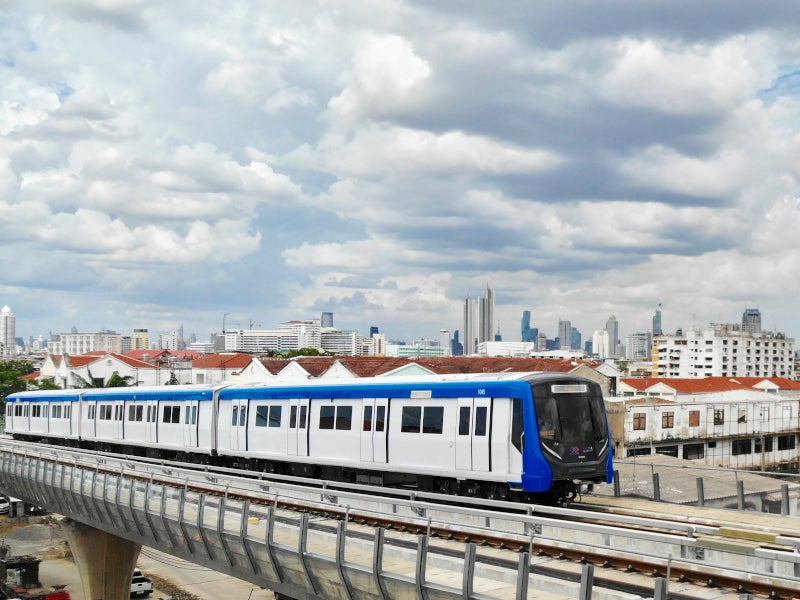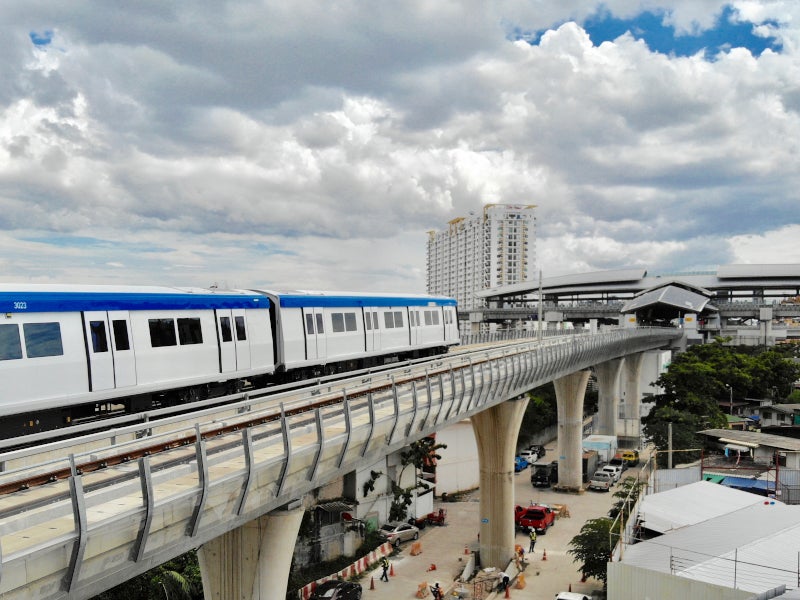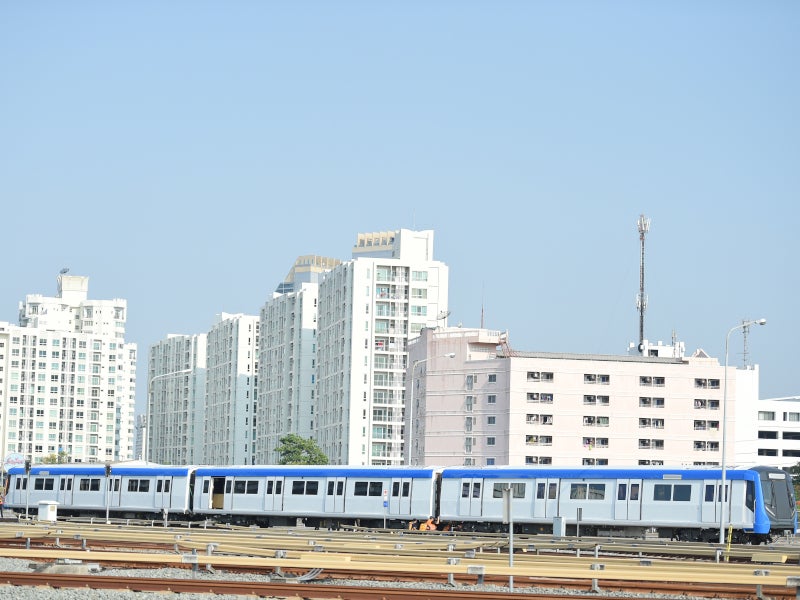Bangkok’s Blue Line Metro was expanded to meet increasing mobility needs and to tackle the problem of congestion in the city.
The project was implemented by Mass Rapid Transit Authority of Thailand (MRTA), Bangkok Expressway and Metro (BEM) and CH Karnchang. The expansion of the network will significantly increase ridership and improve connectivity.
The integrated rail system for the Blue Line Metro extension project was delivered within a period of 30 months. The trial run on the south-western extension and the third section of the Blue Line was opened in July and December 2019 respectively. The entire expansion was completed and opened for full passenger revenue service in April 2020.
The project forms a part of the city’s plans to enhance its rapid transit system and will support the strategy of increasing the urban transit users to 60% of the population by 2021.
MRT Blue Line Extension Project background
The initial Blue Line metro, which became operational in July 2004, is the first underground metro line in Bangkok, Thailand.
The MRT Blue Line or the Chaloem Ratchamongkhon Line carried 360,000 passengers daily until its expansion. The 20km-long metro line included 18 stations.
The expansion was undertaken to strengthen the Blue Line metro to meet passenger growth, complete the semi-circle shaped metro line and double the track length.
MRT Blue Line Extension Project details
Bangkok’s Blue Line Metro extension project expanded the track length by 28km, including underground and elevated tracks, and added 19 new stations. It extends the network from Hua Lamphong to Lak Song in the south and Bang Sue in the north to Tha Pra. The extension involved the development of approximately 21.5km of elevated line and 5.4km of underground route.
The project enables better connectivity between the Thonburi side of the Chao Phraya river and the remaining areas of Bangkok while increasing the passenger-carrying capacity to 500,000 passengers a day.
The first section of the project from Hua Lamphong to Tha Phra was fully opened in August 2019. The Blue Line extension forms an orbital metro rail network around the centre of the city, including a primarily elevated part on the western side of the Chao Praya River and an underground section on the eastern side.
The extension project includes an automatic train control system installed with a high-performance solution for safe signalling. The technology allows for automatic protection and operation of metro trains while improving the punctuality of the service.
Two bulk power stations are responsible for the electrification of the network. The electrification system comprises medium voltage switchgears, supply rings, transformers, complete DC traction power supply, a network control system, and passenger station supply. The network is supported by an additional emergency power supply.
Rolling stock
The expanded project involved the acquisition of 35 new three-car metro trains with improvised car design and an average carrying capacity of 800 passengers. The trains can achieve a top speed of 80km/h.
The car bodies were manufactured at the Siemens Mobility consortium partner and Turkish railway manufacturer Bozankaya’s plant in Ankara, Turkey.
The robotic finishing of car bodies was fully automated and was performed at Siemens Mobility’s Vienna plant.
The construction of the trains involved connecting the car bodies to the bogies, which were manufactured in Graz, Austria.
The vehicles underwent quality checks and final functional testing before they were shipped from the Hamburg port in Germany to Bangkok.
Contractors involved in the metro line extension
Siemens Mobility was awarded an integrated turnkey services contract for the Blue Line expansion in 2017. The company supplied the metro trains and handled the installation of signalling and the development of traction power supply. The contractual scope also included depot workshop equipment, passenger information system, SCADA, system integration, and project management, as well as maintenance services for a ten-year period.
ST Electronics Thailand delivered the telecommunications and platform screen door systems for the vehicles.
Dorsch Group took part in the planning of the Blue Line extension as a part of the Three Lines Project in 2005. The company along with Index Group provided project management consultancy services and supervised the work of the contractors. Five contracts worth €1.4bn ($1.73bn) were awarded to companies to perform the project work.
Italian Thai Development (ITD) won a contract for designing and building of 2.8km of Hua Lamphong-Sanam Chai underground section, including two stations.
Arup collaborated with ITD on the development of the two underground stations. The services included building services, geotechnics, architecture, fire engineering, tunnel ventilation, civil engineering and structural, passenger movement analysis and alignment.
Siam Denki Engineering Company provided electrical and communication construction work for Wat Mangkorn station.
MRTA awarded a contract to a joint venture of Sinohydro, and Unique Engineering and Construction (SH-UN Joint Venture) to build 11km of an elevated railway line from Tao Poon to Tha Phra.
Sino-Thai constructed a 10.5km-long elevated section between Tha Phra to Luk Song, and seven stations.
CH Karnchang won a design and build contract for a 2.6km-long underground track between Sanam Chai to Tha Phra, and another contract to provide the trackwork system.
French engineering company Egis was selected as part of the MEBL consortium to provide mechanical and electrical supervision services.
Thales delivered and implemented the Automatic Fare Collection (AFC) ticketing system across 19 stations covered under the expansion.
Mageba provided 979 RESTON-POT bearings for the elevated network in the Taopoon-Tha Pra route.





